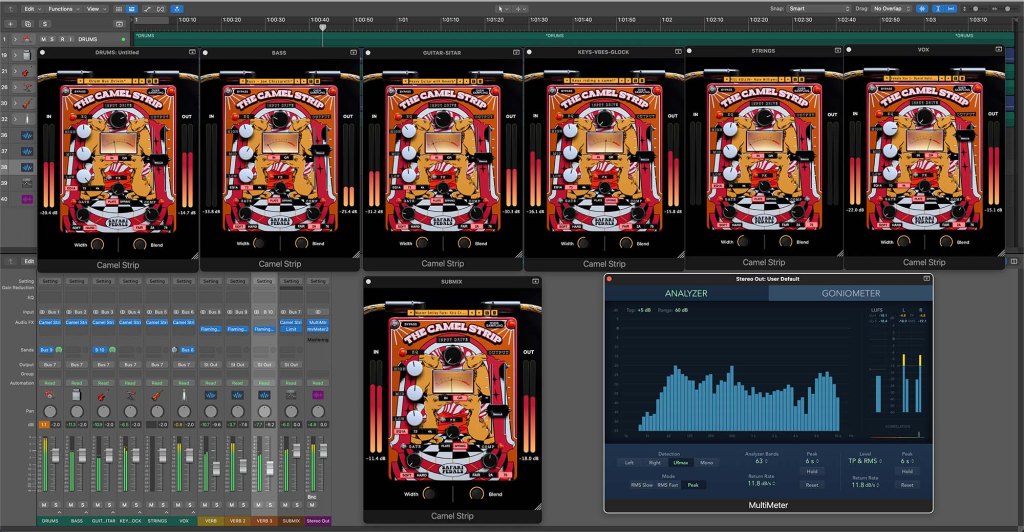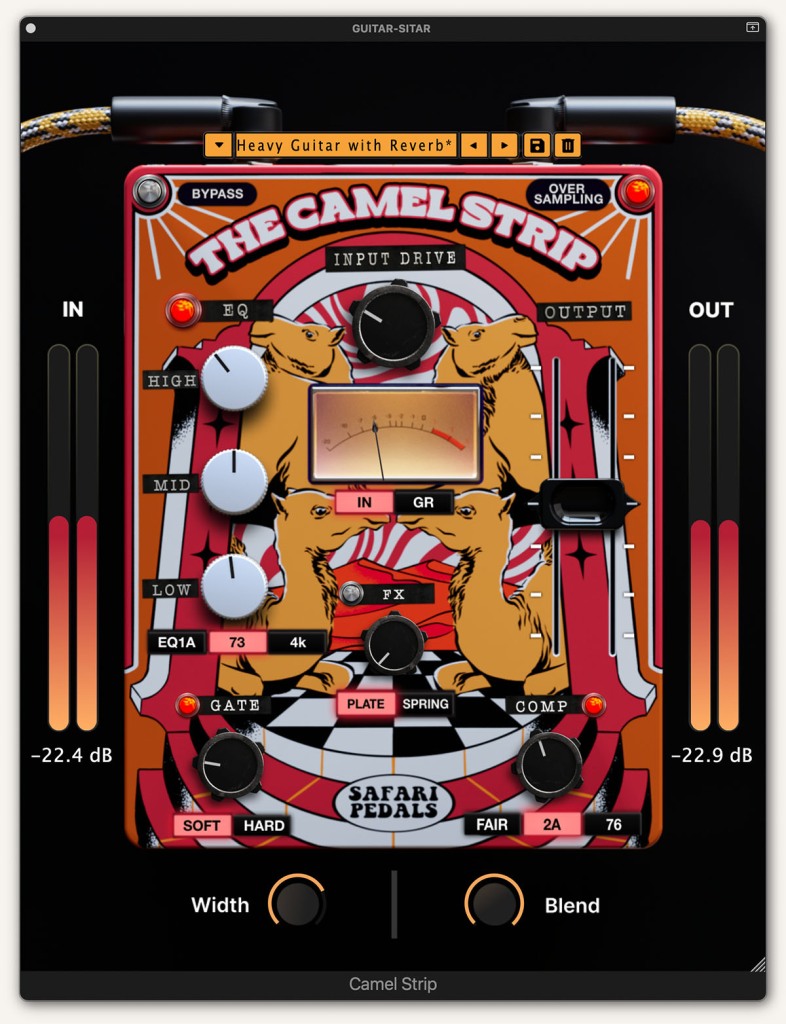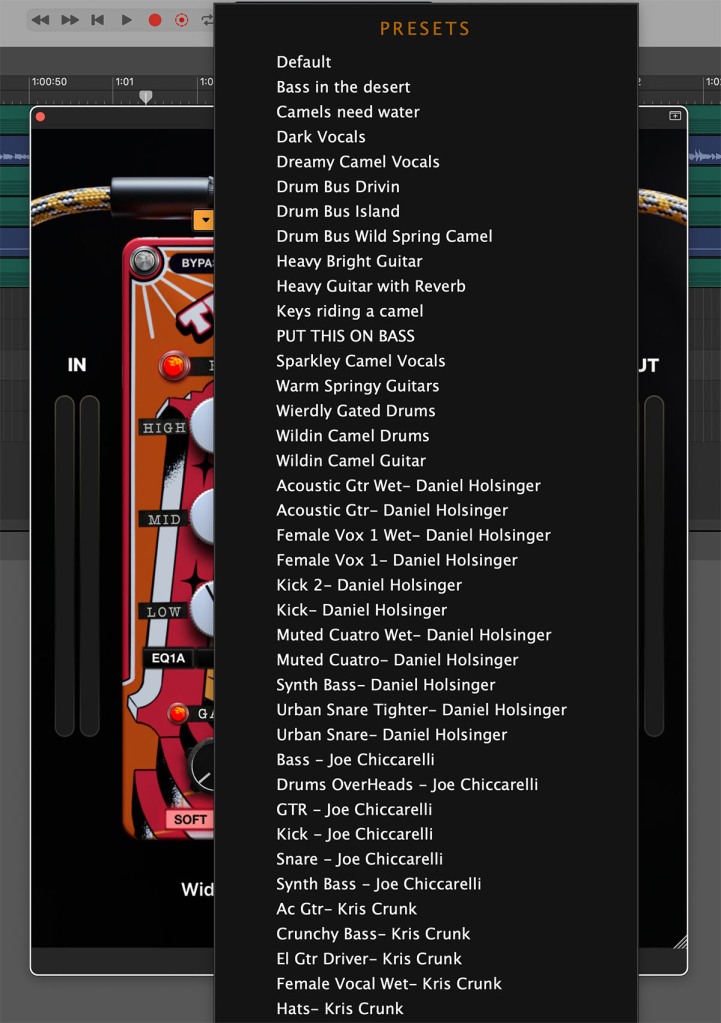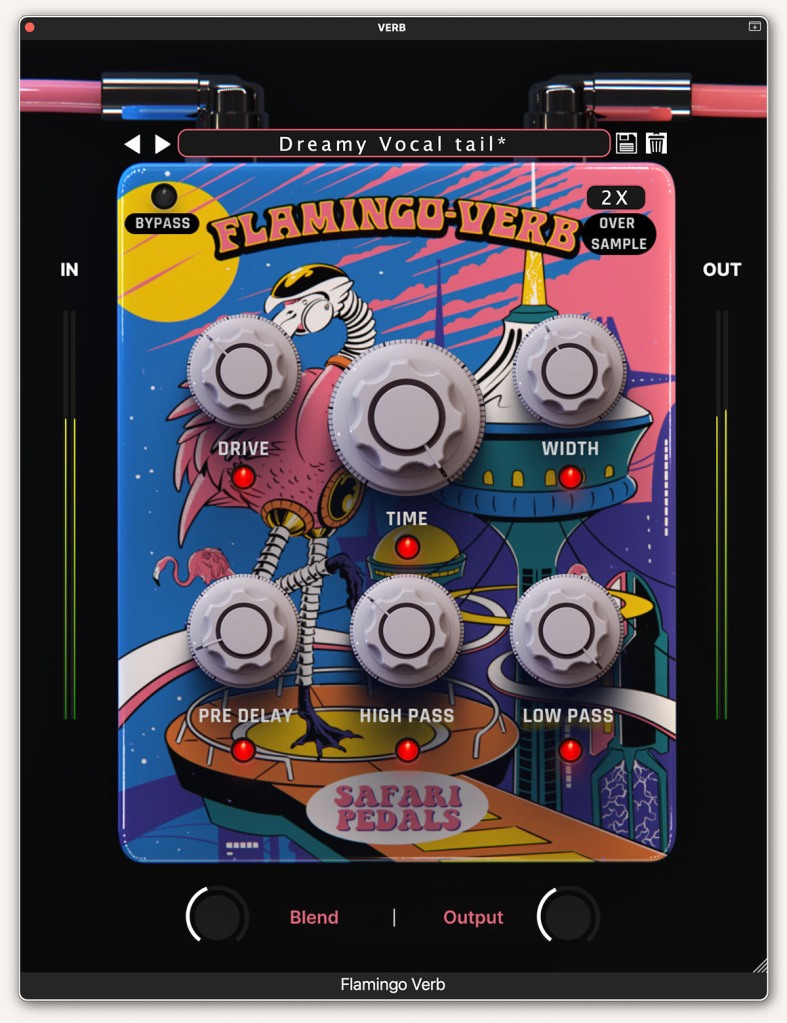
Safari Pedals recently launched another in their series of unique plugins: The Camel Strip – Wildin Channel Strip. It’s a console channel strip that combines a number of functions. Their marketing positions it as the channel strip you’d want on a desert island if you could only have one. I would say, given that ‘camel’ is in the name, you would likely be alone in the desert and not an island. Of course, I’m being cheeky, because Safari Pedals uses playful animal and jungle themes in the design for most of their products. These plugins are visually modeled in the style of guitar pedals, even though they are intended as DAW effects.
An actual console channel strip (hardware) often integrates a variety of components, including filters, EQs, compression, gates, etc. Neve and API consoles use simpler channel strip configurations, while others, like Solid Sate Logic (SSL) and Focusrite, are more elaborate. Safari Pedals has loaded nearly everything into Camel Strip that you’d want. It actually offers more in a single plugin than most hardware channel strips or their software equivalents. As far as I know, only the various SSL channel strips offer most of these functions, but Safari Pedals still has them beat.
Loading up the camel
Camel Strip includes three EQ models, hard and soft gating, plate and spring reverbs, and three compressor types. Rounding it out, you’ve got input drive, a stereo width control, output level and blend percentage, plus oversampling. As with their other plugins, just grab the lower right corner to quickly resize the interface.
That number of functions might sound overwhelming, but the Camel Strip design uses a simplified version of the controls for the tools that they are emulating. For example, the three EQ options are modeled after the sound characteristics of a Pultec-style EQ, a Neve 1073, and an SSL 4000. Yet you only have three control knobs – low, mid, high. The originals utilize more knobs, filters, and specific Q adjustments. None of that is part of Camel Strip. That’s not necessarily bad. The three style selections do sound different from each other, so you can fairly say that Camel Strip imparts the color of those products even if it isn’t trying to be an exact clone.
The same is true for the other components. The three compressor types, which are modeled after Fairchild (vari-mu style), LA2A, and 1176 compressors, only offer a single control to dial in the amount of compression. The gate lets you select between a hard and soft knee and there are both spring and plate reverb effects. These all feature a single knob instead of the several that such units typically present to the user. Nevertheless, they offer variations and impart the representative color of such units.
The individual effects sound quite good isolated and that’s especially true of the two reverb models. Plugins often don’t do reverb properly and tend to veer into spacey, sci-fi sounds. The Camel Strip plate and spring options come across as more musical than others.
You can enable and disable each of these functions (click the LED), but there’s no way to rearrange the processing order. In fact, it’s not clear what the order of operation is. Many of the competing, multi-function channel strip plugins allow you to do this. For example, moving or routing the EQ before or after the compressor section. Even the original SSL hardware let you do this. I realize that this wouldn’t be easy to implement using the guitar pedal motif and might become too confusing for users. I don’t know what’s happening under the hood, but it might not make much of a sonic difference anyway.
Riding the camel
Regardless of some of these concerns, Camel Strip sounds good and imparts a vintage sound to the mix. I like to use channel strip plugins on my buses rather than individual channels/tracks. Applying multiple instances of Camel Strip with oversampling engaged caused no issues on my iMac. In fact, I slapped together a quick test mix using seven Camel Strip inserts, plus three sends to separate instances of Safari Pedals’ Flamingo Verb, just to test the mix using only Safari Pedals’ plugins. The result sounded pretty good before any fine tuning. Camel Strip comes with a large selection of presets, including some by noted recording engineer, Joe Chiccarelli. Of course, you can also save your own custom settings.
The Safari Pedals approach probably isn’t for everyone – especially if you are someone who likes to twiddle endlessly with the controls. A tool like Camel Strip is certainly ideal for someone starting out, but it would be wrong to think that’s the main target user. If you want a vintage sound without getting into the weeds using a million plugins and settings, then Camel Strip is a good choice for any experience level. It presents the right level of control and allows you to work quickly without compromise.
Camel Strip comes in AU, VST3, and AAX for macOS and Windows. Installation and product activation is easy, plus there’s a 14-day free trial to check it out.
©2024 Oliver Peters


